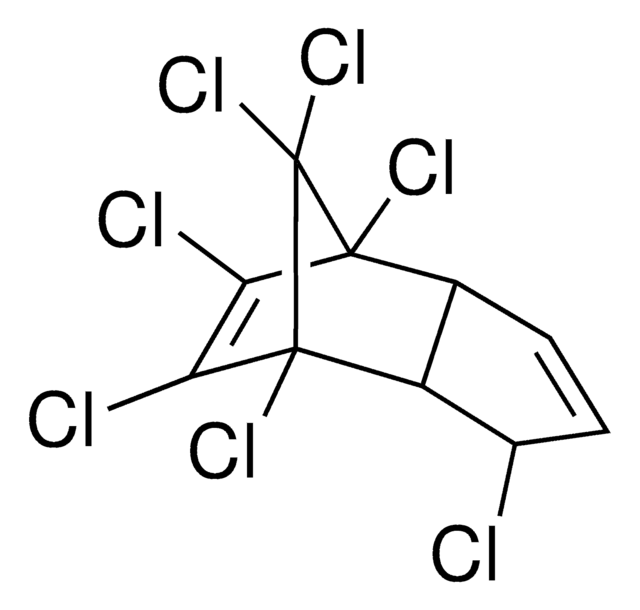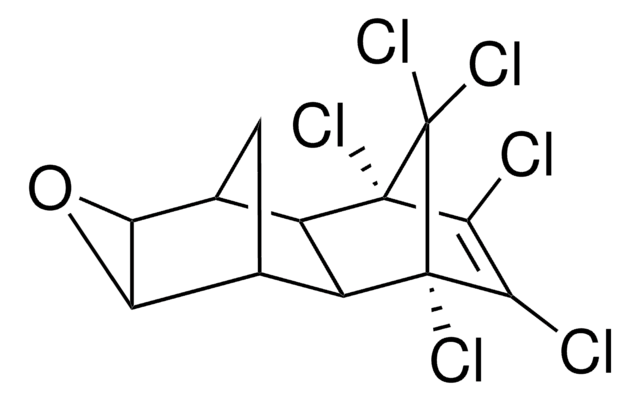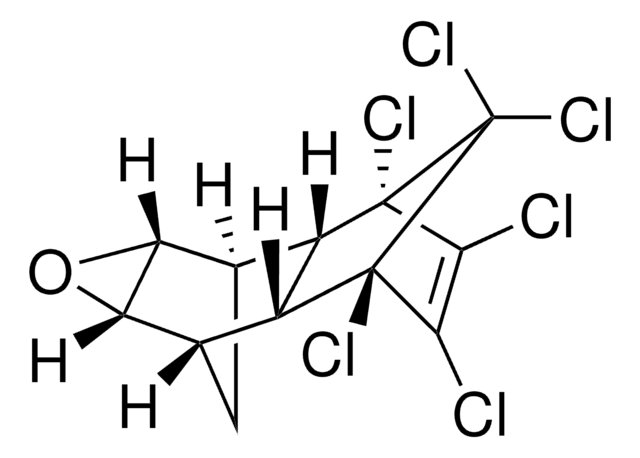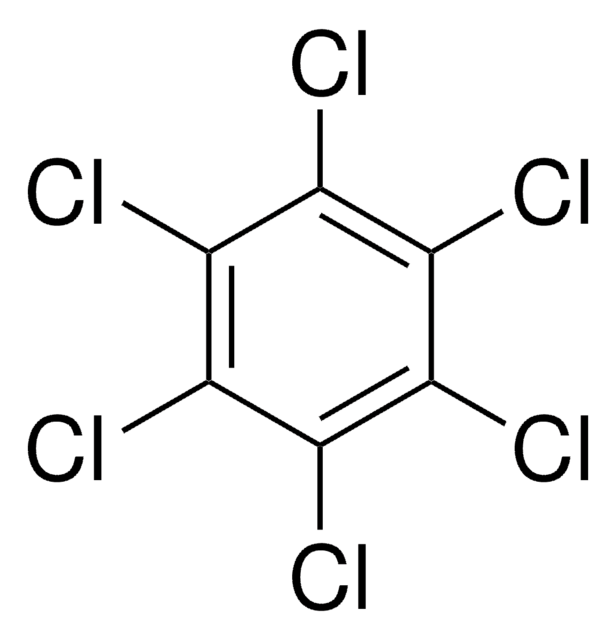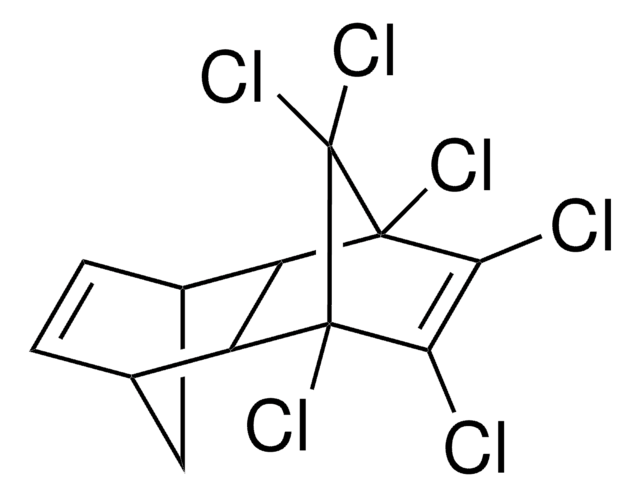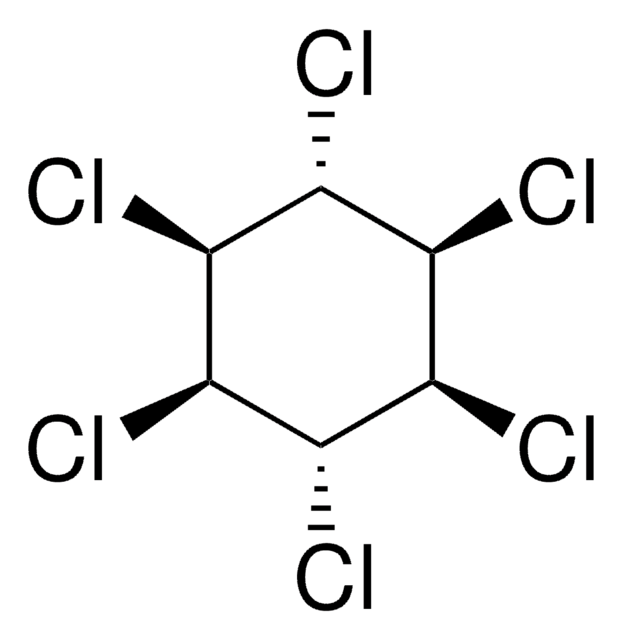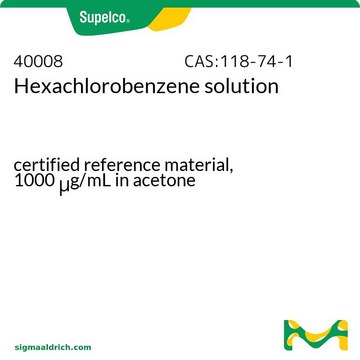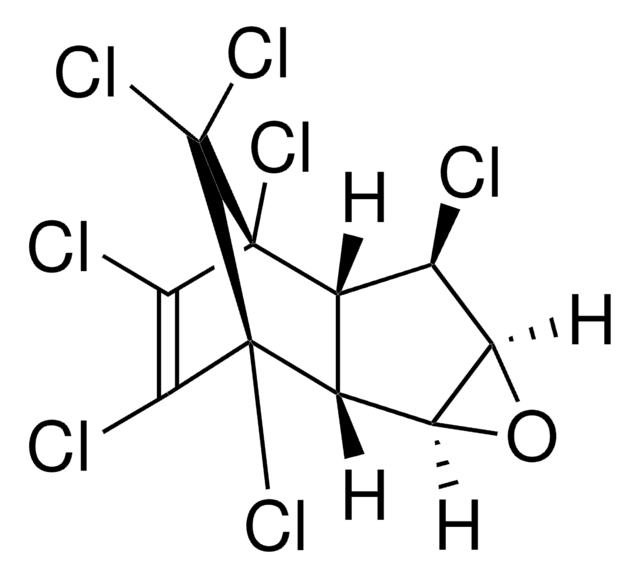31211
Heptachlor solution
100 μg/mL in methanol, PESTANAL®, analytical standard
About This Item
Recommended Products
grade
analytical standard
Quality Level
product line
PESTANAL®
shelf life
limited shelf life, expiry date on the label
concentration
100 μg/mL in methanol
technique(s)
HPLC: suitable
gas chromatography (GC): suitable
application(s)
cleaning products
cosmetics
environmental
food and beverages
personal care
format
single component solution
storage temp.
2-8°C
SMILES string
ClC1C=CC2C1[C@]3(Cl)C(Cl)=C(Cl)[C@@]2(Cl)C3(Cl)Cl
InChI
1S/C10H5Cl7/c11-4-2-1-3-5(4)9(15)7(13)6(12)8(3,14)10(9,16)17/h1-5H/t3?,4?,5?,8-,9+/m1/s1
InChI key
FRCCEHPWNOQAEU-ZFBAKZBRSA-N
Looking for similar products? Visit Product Comparison Guide
General description
Application
- In groundwater samples by solid phase microextraction (SPME) method with a polyacrylate fibre, prior to detection by gas chromatography mass spectrometry in electron impact ionisation mode (GC–EI-MS).
- In fruits and vegetables using solid phase extraction clean-up followed by gas chromatography and electron-capture detection (GC–ECD).
Legal Information
Signal Word
Danger
Hazard Statements
Precautionary Statements
Hazard Classifications
Acute Tox. 3 Dermal - Acute Tox. 3 Inhalation - Acute Tox. 3 Oral - Flam. Liq. 2 - STOT SE 1
Target Organs
Eyes,Central nervous system
Storage Class Code
3 - Flammable liquids
WGK
WGK 2
Flash Point(F)
51.8 °F - closed cup
Flash Point(C)
11 °C - closed cup
Personal Protective Equipment
Regulatory Information
Choose from one of the most recent versions:
Certificates of Analysis (COA)
Don't see the Right Version?
If you require a particular version, you can look up a specific certificate by the Lot or Batch number.
Already Own This Product?
Find documentation for the products that you have recently purchased in the Document Library.
Our team of scientists has experience in all areas of research including Life Science, Material Science, Chemical Synthesis, Chromatography, Analytical and many others.
Contact Technical Service